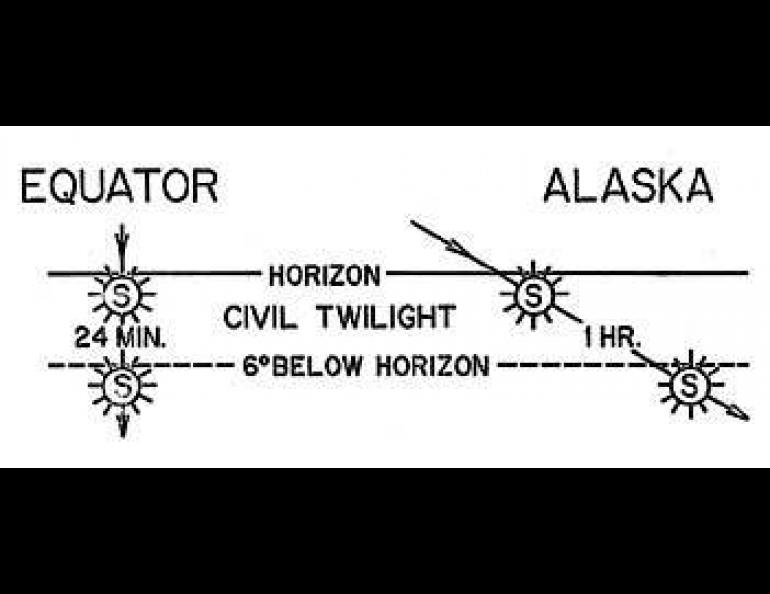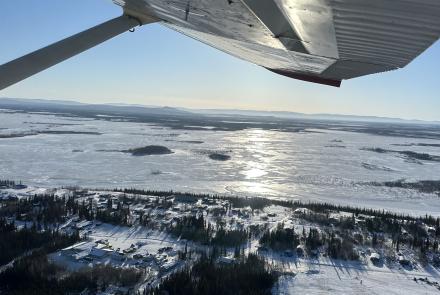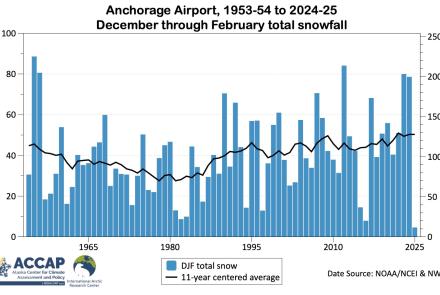
Twilight Zone
Partly compensating for the miseries of winter in interior Alaska are the long twilights year-round. Soft light casting long patterns through the trees and beautiful sunrises and sunsets are the result of the low sun in its slanting path across the horizon.
Near the equator, the sun rises and sets rapidly because its path is near perpendicular to the horizon. There, the setting sun moves from the horizon, at equinox, to 6° below the horizon in only 24 minutes. By definition, civil twilight ends when the sun is 6° below the horizon, though the sky is still light for some minutes afterward.
But at Fairbanks, the end of civil twilight is nearly an hour after sunset on equinootial dates. From May 15 until July 23, civil twilight never ends because the sun never falls as low as 6° below the horizon. Even in December civil twilight lasts about an hour. The reason for the long twilights at high latitude is the slanting path taken there by the sun as it passes the horizon. A greater rotation of the earth on its axis is required to bring the sun 6° below the horizon at the higher latitudes.





